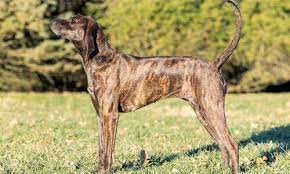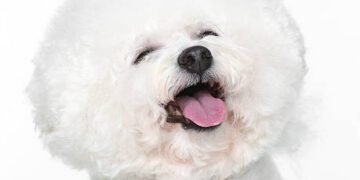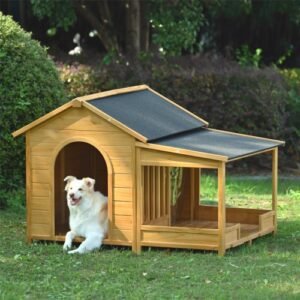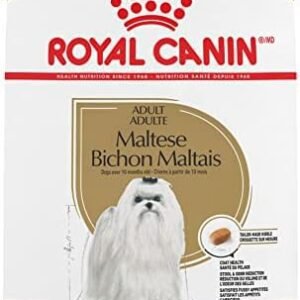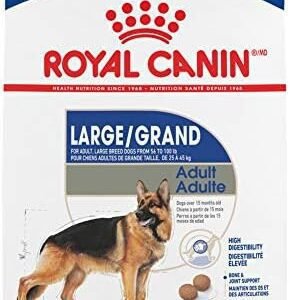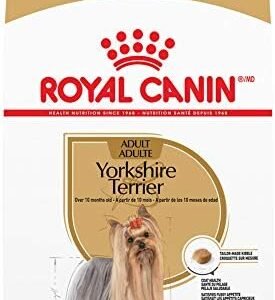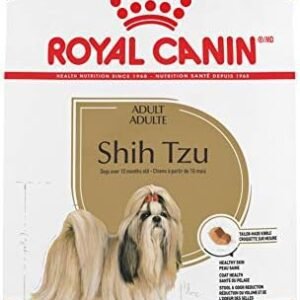Introduction
The world of dog breeds is a diverse and fascinating one, with each breed having its own set of characteristics and qualities. In this article, we delve into the world of the Clumber Spaniel, a breed known for its regal appearance, gentle temperament, and unique history.
Why Choose the Clumber Spaniel?
Selecting the right dog breed is a significant decision that can influence your lifestyle and daily routines. Understanding a breed’s characteristics and needs is paramount. The Clumber Spaniel, with its distinctive traits, is a choice that’s worth considering. What sets this breed apart from the rest? Let’s explore its uniqueness.
Table: Clumber Spaniel Dog Breed
| Field | Information |
|---|---|
| Height | 17 to 20 inches |
| Weight | 55 to 85 pounds |
| Life Span | 10 to 12 years |
| Good with | Families, children |
| Temperament | Gentle, loyal, dignified |
| Intelligence | Moderate |
| Shedding Amount | Moderate |
| Grooming | Moderate to high |
| Exercise Needs | Moderate to high |
| Energy Level | Moderate to high |
| Barking Level | Low |
| Drool Amount | Low |
| Coat Length/Texture | Dense, water-resistant |
| Colors | White with lemon or orange markings |
| Patterns | White and Lemon |
The Clumber Spaniel’s unique characteristics, including its gentle temperament, dignified demeanor, and moderate exercise needs, make it an intriguing choice for those looking to welcome a new canine companion into their lives.
In the following sections, we’ll delve deeper into the history, physical attributes, temperament, care requirements, and more to provide you with a comprehensive understanding of the Clumber Spaniel.
Table of Contents
Breed History and Origin
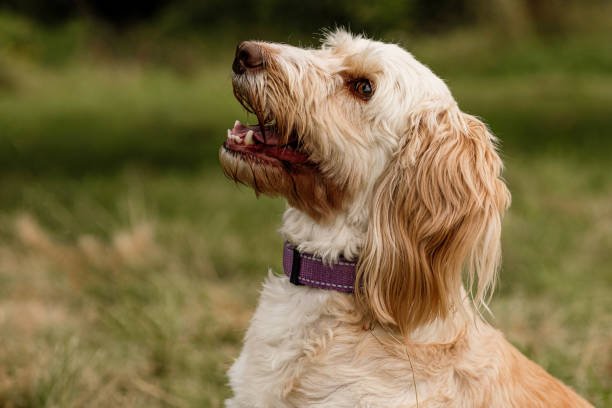
Exploring Their Roots
The Clumber Spaniel’s history is a journey that takes us back to a time when hunting dogs were an essential part of the aristocratic lifestyle. This breed, with its noble history and unique characteristics, has a captivating origin story.
Historical Development
The Clumber Spaniel, often associated with British nobility, has a rich and storied history that dates back to the 18th century. The breed’s development was largely influenced by the British aristocracy’s passion for hunting game birds. The Clumber Spaniel was meticulously bred for its remarkable abilities in retrieving game, particularly in dense woodlands. Its name is derived from Clumber Park in Nottinghamshire, England, where the breed was cultivated by the Duke of Newcastle.
Ancestors of the Clumber Spaniel
While the precise lineage of the Clumber Spaniel isn’t always well-documented, it’s believed that several breeds contributed to its genetic makeup. The breed’s ancestry is thought to include the Basset Hound, Alpine Spaniel, and early Alpine Spaniel, among others. These ancestral breeds played a significant role in the Clumber Spaniel’s development, providing it with its distinct characteristics.
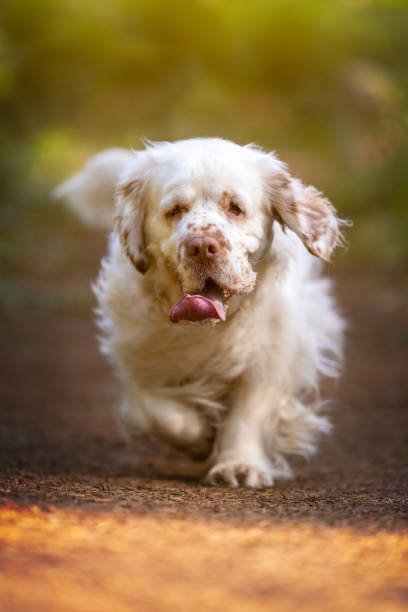
Hunting Tradition
The Clumber Spaniel was primarily bred to assist in hunting, particularly in woodland environments. Their sturdy build, dense water-resistant coat, and strong scenting abilities made them excellent retrievers of game birds. With their stocky bodies and powerful legs, they could navigate through dense underbrush with ease.
Notable Traits
The Clumber Spaniel boasts several distinctive traits that set them apart in history:
- Stoic Retrievers: Their calm and collected demeanor in the field made them reliable game retrievers. The breed’s ability to work in silence and retrieve game without disturbing the surroundings endeared them to hunters.
- Gentle and Loyal: The Clumber Spaniel’s gentle disposition and loyalty made them cherished companions of the British aristocracy. Their dignified behavior and affectionate nature were valued attributes.
- Heavy-Boned Build: Their stocky, heavy-boned build, along with a robust jaw, made them excellent at carrying game birds without causing damage. Their strong, muscular legs allowed them to traverse challenging terrain.
Relevance of Origin
The Clumber Spaniel’s origin is deeply embedded in its characteristics today:
- Stoic and Dignified Nature: The breed’s historical role as a game retriever influenced its calm and dignified temperament. They are known for their unruffled demeanor, making them excellent family pets.
- Gentleness and Loyalty: The Clumber Spaniel’s loyalty to its human companions, a trait inherited from their noble hunting lineage, continues to define the breed. They are known for forming strong bonds with their families.
- Solid Build and Stamina: The breed’s robust build is still apparent in modern Clumber Spaniels. While their hunting days are behind them, their solid frame and endurance make them adaptable to various activities.
In the following sections, we will delve into the physical attributes, temperament, care requirements, and health considerations that are essential for understanding and caring for the Clumber Spaniel, a breed steeped in aristocratic history.
Understanding the Clumber Spaniel Breed’s Traits
Physical Characteristics

The Clumber Spaniel’s physical attributes contribute to its unique charm and suitability for specific roles, both historically and in modern settings.
- Size: Clumber Spaniels are a medium to large breed. While exact measurements may vary, a typical adult Clumber Spaniel stands between 17 to 20 inches (43 to 51 cm) at the withers. Their weight usually ranges from 55 to 85 pounds (25 to 39 kg).
- Coat Type: The breed’s coat is dense and water-resistant. Clumber Spaniels have a straight, flat, and soft coat with feathers on their ears, legs, chest, and belly. The coat color is predominantly white with distinct lemon or orange markings.
- Distinguishing Features: Clumber Spaniels have a sturdy and stocky build. Their large, square head features a deep, square-shaped muzzle. They have expressive, dark amber or hazel eyes that exude intelligence and warmth. Their ears are set low and hang close to the cheeks. The breed’s body is well-proportioned, giving them a regal and dignified appearance.
Temperament Overview
The Clumber Spaniel’s temperament is a testament to their rich history as noble companions and skilled game retrievers. This breed exhibits several characteristics that make them wonderful family pets.
- Suitability as Family Pets: Clumber Spaniels are renowned for their gentle and loyal nature. They make excellent family pets, known for forming strong bonds with their human companions. Their calm and dignified demeanor means they are generally safe and patient with children, making them a great addition to family life.
- Compatibility with Other Pets: While Clumber Spaniels have a hunting background, they can be compatible with other pets, provided they are socialized from a young age. Their gentle temperament can make them a good fit in multi-pet households.
Environment Needs
Clumber Spaniels can adapt to a variety of living environments, but there are some considerations to keep in mind.
- Space Requirements: Despite their size, Clumber Spaniels are not overly active indoors. They are known to be couch potatoes and enjoy lounging around the house. A medium to large living space is suitable for them. Access to a yard or open space for exercise is beneficial.
- Temperature Sensitivity: Their dense coat can make them less tolerant of hot weather. During the summer, it’s important to provide a cool, shaded area for them to relax. In cold weather, they thrive, and their water-resistant coat helps protect them from the elements.
Common Behavioral Traits
Clumber Spaniels possess a range of behavioral traits that make them unique and endearing pets. It’s important to understand these traits and how to manage them effectively.
- Loyal and Devoted: Clumber Spaniels are incredibly loyal to their families. They form strong bonds and enjoy being close to their human companions.
- Moderate Energy Levels: While they may have a sporting background, Clumber Spaniels do not have extremely high energy levels. They enjoy moderate exercise, such as daily walks and playtime.
- Gentle Nature: Their gentle temperament is one of their defining features. Clumber Spaniels are patient and are known for their tolerance, especially with children.
- Aversion to Boredom: Like many intelligent breeds, Clumber Spaniels may become bored if left without stimulation. Provide them with mental and physical activities to prevent destructive behavior.
- Potential for Stubbornness: Clumber Spaniels are not overly eager to please, and their independent streak can lead to occasional stubbornness. Consistent and positive reinforcement training methods work best.
- Alert and Protective: They may have a calm demeanor, but Clumber Spaniels are still alert and make excellent watchdogs. They will notify you of any unusual activity.
In the upcoming sections, we’ll explore the care requirements, exercise needs, grooming tips, and health considerations for the Clumber Spaniel, ensuring that you have all the information you need to provide the best possible care for this unique and noble breed.
Popularity and Recognition
Current Popularity
The Clumber Spaniel, with its unique history and endearing qualities, enjoys a dedicated fan base, but it may not be as popular as some other breeds. The breed’s popularity can vary by region and is influenced by factors such as availability, suitability for different lifestyles, and trends in dog ownership.
In recent years, there has been a growing interest in Clumber Spaniels among families looking for a gentle and loyal companion. Their suitability as family pets and their calm temperament make them appealing to those seeking a friendly and affectionate canine friend.
Breed Recognition
The Clumber Spaniel may not be as widely recognized as some other more popular breeds, but it has gained recognition from kennel clubs and breed organizations.
- American Kennel Club (AKC): The American Kennel Club officially recognizes the Clumber Spaniel. The breed is part of the Sporting Group. This recognition helps raise the breed’s profile and ensures that Clumber Spaniels meet specific breed standards.
- The Kennel Club (UK): In the United Kingdom, The Kennel Club also recognizes the Clumber Spaniel. The breed falls under the gundog group, a testament to its historical role as a skilled game retriever.
While the Clumber Spaniel might not be among the most popular breeds, recognition by these kennel clubs and organizations is essential in maintaining breed standards and ensuring responsible breeding practices.
Notable Breed Varieties
The Clumber Spaniel, as a breed, does not have distinct varieties or subtypes like some other breeds (e.g., American vs. English Bulldogs). However, within the Clumber Spaniel breed, individual dogs may have slight variations in appearance and temperament. These differences can be attributed to genetics and lineage, but they all fall under the general Clumber Spaniel breed characteristics.
Clumber Spaniels are generally consistent in their appearance and temperament. Breeders adhere to the established breed standards, which help maintain the Clumber Spaniel’s distinctive traits and qualities. The breed’s unique combination of a gentle nature, loyalty, and dignified demeanor remains a defining feature regardless of individual variations.
In the following sections, we will explore the care and maintenance of Clumber Spaniels, providing guidance on their exercise needs, grooming, and health considerations. Understanding how to best care for this breed will help ensure their well-being and happiness in your family.
Exercise Needs and Activity Levels
Health Considerations and Care
Common Health Issues
While Clumber Spaniels are generally healthy dogs, like all breeds, they can be prone to specific health issues. It’s important for potential owners to be aware of these conditions and to work with responsible breeders who conduct health screenings. Common health issues in Clumber Spaniels may include:
- Hip Dysplasia: Hip dysplasia is a common orthopedic issue in many breeds, including Clumber Spaniels. It occurs when the hip joint doesn’t develop correctly, leading to arthritis and pain. Responsible breeding and monitoring of this condition are crucial.
- Entropion: Clumber Spaniels may be prone to entropion, a condition where the eyelids roll inward, causing irritation and sometimes corneal damage. Surgical correction is often necessary.
- Ear Infections: The breed’s pendulous ears can make them susceptible to ear infections. Regular cleaning and inspection of the ears can help prevent this issue.
- Obesity: Clumber Spaniels have a tendency to gain weight if their diet and exercise are not well-regulated. Obesity can lead to various health problems, so it’s essential to monitor their food intake and provide regular exercise.
- Cancer: Like many breeds, Clumber Spaniels can be at risk for various types of cancer. Regular vet check-ups can aid in early detection and treatment.
- Intervertebral Disc Disease (IVDD): This condition involves the spinal discs deteriorating, leading to pain and sometimes paralysis. While it is more common in certain breeds, it can affect Clumber Spaniels, so owners should be vigilant.
Lifespan and Longevity
The average lifespan of a Clumber Spaniel typically ranges between 10 to 12 years, but some can live longer with proper care and a healthy lifestyle. To promote a longer and healthier life for your Clumber Spaniel, consider the following tips:
- Balanced Diet: Provide a well-balanced diet that meets your dog’s nutritional needs. Obesity can shorten a dog’s lifespan, so monitor their weight and adjust their food intake accordingly.
- Regular Exercise: While Clumber Spaniels are not overly active, they do need regular exercise to maintain a healthy weight and overall well-being. Daily walks and playtime are beneficial.
- Veterinary Care: Regular vet check-ups are essential for preventive care. Ensure your Clumber Spaniel receives vaccinations, dental care, and screenings for common breed-specific health issues.
- Grooming: Regular grooming and maintenance of their dense coat can help prevent skin issues and discomfort.
- Mental Stimulation: Provide mental stimulation and activities to keep their minds active. Interactive toys and puzzles can be helpful.
- Socialization: Early socialization with other dogs and people is vital. Clumber Spaniels are known for their gentle nature, and proper socialization can help them become well-adjusted and confident adults.
- Dental Care: Dental hygiene is essential. Brush your Clumber Spaniel’s teeth regularly and provide dental chews or toys to promote oral health.
- Safe Environment: Create a safe environment in your home and yard. Clumber Spaniels are inquisitive and may need protection from hazards.
- Parasite Control: Regularly use preventive measures to control fleas, ticks, and other parasites.
- Love and Attention: Provide your Clumber Spaniel with love, attention, and companionship. They thrive on forming strong bonds with their families.
By following these guidelines and ensuring proper care, you can help your Clumber Spaniel live a long, happy, and healthy life.
In the next section, we will explore grooming tips and care requirements, providing you with valuable insights into keeping your Clumber Spaniel looking and feeling its best. Understanding their unique grooming needs is essential for their overall well-being and comfort.
Exercise and Activity Recommendations
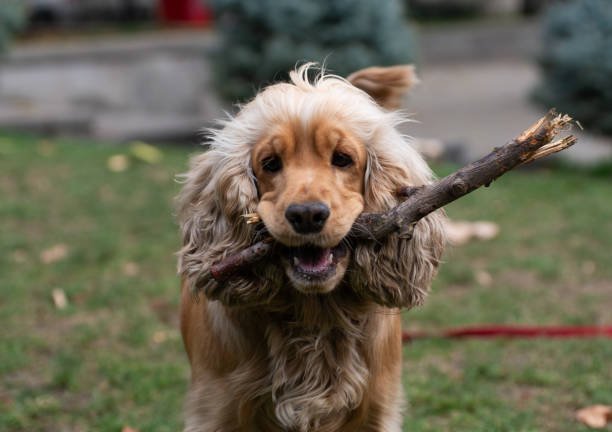
Exercise is an essential aspect of caring for your Clumber Spaniel’s physical and mental well-being. While they may not be as high-energy as some other breeds, they still require regular exercise to stay healthy and happy. In this section, we will provide you with a detailed exercise plan, including types of exercise, duration, and frequency, to ensure your Clumber Spaniel remains in top form.
Types of Exercise
Clumber Spaniels are versatile when it comes to exercise, and they enjoy a variety of activities. Here are some types of exercise that are well-suited to this breed:
- Daily Walks: Regular walks are an excellent way to keep your Clumber Spaniel in shape and provide them with mental stimulation. Aim for at least one or two walks per day, each lasting around 30 minutes to an hour.
- Playtime: Interactive play sessions are highly beneficial. Engage in games like fetch or hide-and-seek to keep them active and mentally engaged. These sessions should be incorporated into their daily routine.
- Agility Training: Clumber Spaniels have moderate intelligence and can enjoy agility training. Set up a simple obstacle course in your yard or participate in agility classes to challenge their mind and body.
- Hiking: This breed enjoys outdoor activities, and hiking is a great way to explore nature together. Choose trails that match their energy levels, and be sure to provide water and rest breaks.
- Swimming: Some Clumber Spaniels are natural swimmers, thanks to their water-resistant coat. If your dog enjoys the water, swimming can be an excellent exercise option.
- Obedience and Trick Training: Mental stimulation is just as important as physical exercise. Clumber Spaniels can benefit from obedience and trick training sessions to keep their minds sharp.
- Dog Parks: Trips to the dog park provide social interaction with other dogs and physical activity. Ensure the park is safe and well-fenced.
Duration and Frequency
The exercise needs of Clumber Spaniels may vary depending on their age and individual energy levels. However, here’s a general guideline for the duration and frequency of exercise:
- Daily Walks: Aim for at least one hour of walking daily, divided into two or more walks. This breed enjoys moderate activity, and a daily walk helps meet their exercise requirements.
- Playtime: Incorporate 20-30 minutes of playtime into your dog’s daily routine. Interactive toys or games of fetch can be great options.
- Agility Training: 2-3 short training sessions per week, lasting around 15-20 minutes each, can be mentally stimulating and physically engaging.
- Hiking: Hiking trips can be done once or twice a week, depending on your dog’s fitness level. Start with shorter hikes and gradually increase the duration.
- Swimming: If your Clumber Spaniel enjoys swimming, an occasional swim session can be added to their routine. Ensure it’s in a safe and supervised environment.
- Obedience and Trick Training: Short 10-15 minute training sessions can be held several times a week to keep their minds active and engaged.
- Dog Parks: Visits to the dog park can be a weekly or bi-weekly treat for social interaction and off-leash play.
Remember that individual dogs may have varying exercise needs. Pay attention to your Clumber Spaniel’s cues – if they seem tired or disinterested, it’s essential to respect their limits.
Breed-Specific Considerations
When planning your Clumber Spaniel’s exercise regimen, it’s essential to consider their breed-specific traits and preferences:
- Love for Water: If your Clumber Spaniel enjoys swimming, make the most of it. Find local dog-friendly beaches or pools where they can indulge in their love for the water.
- Scenting Abilities: This breed has a strong sense of smell. Incorporating scent games into their exercise routine, like hiding treats or toys for them to find, can be highly stimulating.
- Mental Stimulation: Clumber Spaniels are intelligent dogs. In addition to physical exercise, make sure to provide them with mental stimulation through training, puzzle toys, or obedience exercises.
- Moderate Energy Levels: While they have a sporting background, Clumber Spaniels are not overly energetic. Balance is key – avoid over-exercising them, especially when they are puppies.
- Age Consideration: Adjust the exercise routine based on your Clumber Spaniel’s age. Puppies may have shorter bursts of energy, while adult dogs can handle more extended activities.
Safety First
When engaging in outdoor activities with your Clumber Spaniel, prioritize their safety:
- Weather: Be mindful of the weather conditions. Clumber Spaniels can be sensitive to heat due to their dense coat, so avoid strenuous activities on hot days. In cold weather, ensure they are warm and protected.
- Hydration: Always bring fresh water for your dog during outdoor activities, especially during hikes or on hot days.
- Leash and Recall: Use a leash in areas where it’s required, and work on recall training to ensure your Clumber Spaniel returns to you when called.
- Tick and Flea Prevention: In wooded areas, be vigilant about tick and flea prevention to keep your dog safe from parasites.
By tailoring your Clumber Spaniel’s exercise routine to their needs and keeping their safety in mind, you can ensure they enjoy a healthy and active lifestyle. Regular exercise not only benefits their physical health but also helps maintain their mental well-being.
In the next section, we will explore the grooming needs of Clumber Spaniels, including tips on maintaining their distinctive coat and ensuring their overall comfort and health. Understanding the unique grooming requirements of this breed is crucial for keeping them in top condition.
Nutrition and Feeding Guidelines
Proper nutrition is essential for your Clumber Spaniel’s overall health and well-being. To ensure that your dog thrives, it’s important to provide a balanced diet tailored to their specific needs, taking into account factors such as size, age, and activity level. In this section, we will offer you guidelines on feeding your Clumber Spaniel, including dietary recommendations and feeding schedules.
Size, Age, and Activity Level Considerations
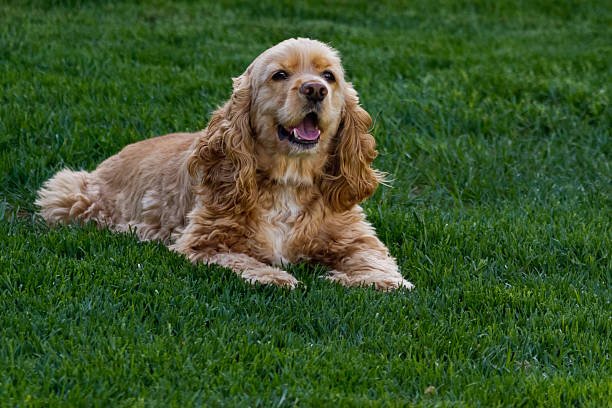
The nutritional needs of Clumber Spaniels can vary depending on their age, size, and activity level. Here are some key considerations:
1. Size:
Clumber Spaniels are considered a medium to large breed. While the average weight ranges from 55 to 85 pounds (25 to 39 kg), individual dogs may fall within this range or be slightly smaller or larger. The amount of food your Clumber Spaniel needs will depend on their specific weight and size. It’s important to monitor their weight and adjust their food intake accordingly to maintain a healthy body condition.
2. Age:
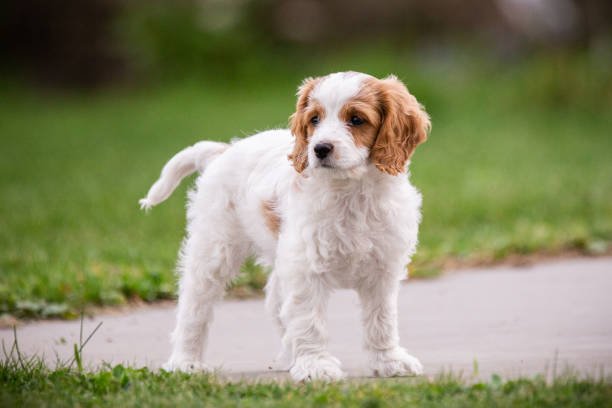
Dietary requirements change as your Clumber Spaniel progresses through different life stages. Consider the following:
- Puppy: Clumber Spaniel puppies require a diet that supports their growth and development. Look for high-quality puppy food that is rich in protein and essential nutrients. Puppies typically need to be fed more frequently throughout the day to meet their energy needs.
- Adult: Adult Clumber Spaniels have different nutritional needs. Choose a well-balanced adult dog food that provides the necessary nutrients without excess calories. Feeding them twice a day is a common practice.
- Senior: As your Clumber Spaniel enters their senior years, their metabolism may slow down, and they could be more prone to certain health issues. Transition to a senior dog food designed to support their aging needs. Senior dogs may benefit from more frequent, smaller meals.
3. Activity Level:
Clumber Spaniels are not high-energy dogs, but they do require regular exercise to maintain their overall health. The more active your dog is, the more calories they’ll need. Adjust their food portions to match their activity level. If your Clumber Spaniel is particularly active, consider a diet formulated for active or working dogs.
Dietary Recommendations
Choosing the right dog food is crucial for your Clumber Spaniel’s health. Look for high-quality commercial dog food that meets the following criteria:
1. Balanced Nutrition: The dog food should provide a well-balanced diet that includes the right proportions of protein, carbohydrates, and fats. Protein is essential for muscle health, while carbohydrates provide energy. Healthy fats are crucial for skin and coat health.
2. High-Quality Ingredients: Check the ingredient list on the dog food packaging. Look for named meat sources (e.g., chicken, lamb, or beef) as the primary ingredient. Avoid dog foods that contain excessive fillers, by-products, or artificial additives.
3. Breed and Age-Specific Formulas: Some dog food brands offer breed-specific formulas or life-stage-specific options. These formulas are tailored to the unique needs of Clumber Spaniels at different stages of life.
4. Consult with Your Vet: It’s a good practice to consult with your veterinarian to determine the best diet for your Clumber Spaniel. Your vet can provide recommendations based on your dog’s specific health needs and any dietary restrictions or allergies.
5. Portion Control: Overfeeding can lead to obesity, which is a common concern in Clumber Spaniels. Follow the feeding guidelines provided on the dog food packaging, and measure your dog’s portions to avoid overeating.
6. Fresh Water: Always provide fresh, clean water for your Clumber Spaniel. Hydration is essential for their overall health.
7. Special Dietary Considerations: Some Clumber Spaniels may have dietary restrictions or allergies. If your dog has specific dietary needs, work with your vet to find an appropriate food that meets those requirements.
Feeding Schedule
Establishing a regular feeding schedule is essential for your Clumber Spaniel’s overall well-being. Here’s a sample feeding schedule for an adult Clumber Spaniel:
- Morning: Provide your dog’s first meal in the morning, typically around 7:00 AM. This meal should make up about 60% of their daily food intake.
- Mid-Day Snack: Some owners offer a small snack or treat around noon to help break up the gap between meals. Keep this snack small to avoid overfeeding.
- Evening: The second meal should be given in the early evening, around 5:00 PM. This meal constitutes the remaining 40% of their daily food.
- Fresh Water: Ensure that your Clumber Spaniel has access to fresh water at all times.
Feeding schedules can be adjusted to accommodate your dog’s specific needs. Some Clumber Spaniels may prefer two larger meals a day, while others may do well with three smaller meals. It’s important to monitor your dog’s weight and adjust their food portions as needed to maintain a healthy body condition.
Common Dietary Restrictions and Allergies
Some Clumber Spaniels may have specific dietary restrictions or allergies. Common issues to be aware of include:
1. Food Allergies: Clumber Spaniels can be sensitive to certain food ingredients. Common allergens in dog food include chicken, beef, wheat, and dairy. If you suspect your dog has food allergies, work with your vet to identify the specific triggers and choose an appropriate diet.
2. Weight Management: As mentioned earlier, Clumber Spaniels are prone to obesity. It’s essential to monitor their weight and caloric intake to prevent excess weight gain. If your dog becomes overweight, work with your vet to develop a weight management plan.
3. Gastrointestinal Sensitivity: Some Clumber Spaniels may have sensitive stomachs. Look for dog food that is formulated for sensitive stomachs, and avoid feeding them table scraps or foods that are known to cause digestive upset.
4. Dental Health: Dental health is crucial for all dogs. Incorporating dental chews or a dental care routine can help prevent dental issues in Clumber Spaniels.
5. Grain-Free Diets: There has been debate surrounding grain-free diets for dogs. While some dogs may benefit from grain-free diets, others may not. Consult with your vet to determine if a grain-free diet is appropriate for your Clumber Spaniel.
In summary, providing your Clumber Spaniel with a balanced, high-quality diet, tailored to their specific needs based on size, age, and activity level, is essential for their health and longevity. Regularly consult with yourveterinarian to ensure that your dog’s dietary requirements are being met and to address any dietary restrictions or allergies they may have.
In the final section, we will explore grooming tips and care requirements for Clumber Spaniels, ensuring that they remain comfortable, healthy, and looking their best.
Grooming Tips and Care Requirements

Clumber Spaniels have a distinctive appearance with their dense, water-resistant coat and regal demeanor. Proper grooming is essential to keep them comfortable and healthy. In this section, we will provide you with grooming tips and care requirements to ensure that your Clumber Spaniel looks and feels its best.
Coat Care
The Clumber Spaniel’s coat is one of its most notable features. Here’s how to maintain their beautiful coat:
1. Brushing: Regular brushing is crucial to prevent mats and tangles in the Clumber Spaniel’s dense coat. Brush your dog at least a few times a week, using a slicker brush or a pin brush. Pay close attention to areas with feathering, such as the ears, legs, chest, and belly.
2. Bathing: Clumber Spaniels do not require frequent baths. Bathing every two to three months, or as needed, is generally sufficient. Use a mild dog shampoo to avoid stripping the coat’s natural oils. Ensure thorough rinsing to prevent skin irritation.
3. Drying: After bathing, gently pat your Clumber Spaniel’s coat with a towel to remove excess moisture. Avoid vigorous rubbing to prevent tangling. Use a hairdryer on a low, cool setting to dry the coat completely.
4. Feathering Care: The feathering on the ears and legs may require additional attention. Regularly check for mats or debris caught in the feathers and gently comb or brush through these areas.
5. Ear Cleaning: Clumber Spaniels are prone to ear infections due to their pendulous ears. Regularly check and clean their ears to prevent issues. Use a veterinarian-approved ear cleaner and a soft cloth or cotton ball. Avoid inserting anything deep into the ear canal.
6. Nail Trimming: Regular nail trimming is essential to keep your Clumber Spaniel comfortable and prevent overgrowth. If you’re unsure about how to trim their nails, consult your veterinarian or a professional groomer.
Dental Care
Dental health is often overlooked but is crucial for your Clumber Spaniel’s overall well-being. Here are some dental care tips:
1. Brushing: Brush your dog’s teeth regularly using a dog-specific toothbrush and toothpaste. Aim to brush their teeth several times a week to prevent plaque and tartar buildup.
2. Dental Chews and Toys: Provide dental chews or toys designed to help keep your dog’s teeth clean. These can also be a source of entertainment and mental stimulation for your Clumber Spaniel.
3. Professional Dental Cleanings: Consider scheduling professional dental cleanings with your veterinarian as needed. They can safely remove plaque and tartar buildup and address any dental issues.
Eye Care
While Clumber Spaniels typically have healthy eyes, it’s essential to monitor them for any signs of irritation or infection. Here are some eye care tips:
1. Cleaning: Gently wipe around your dog’s eyes with a damp, clean cloth to remove any discharge or debris. Use a separate cloth for each eye to prevent cross-contamination.
2. Discharge: If you notice excessive eye discharge or signs of infection (redness, swelling, or unusual behavior), consult your veterinarian for a proper diagnosis and treatment.
Ear Care
As mentioned earlier, Clumber Spaniels are prone to ear infections due to their pendulous ears. Proper ear care is essential:
1. Regular Inspection: Inspect your dog’s ears regularly for signs of redness, odor, or discharge, which can indicate an infection. Catching issues early is key to effective treatment.
2. Cleaning: Use a veterinarian-recommended ear cleaner and a soft cloth or cotton ball to clean your Clumber Spaniel’s ears. Be gentle and avoid inserting anything deep into the ear canal.
3. Drying: After swimming or bathing, ensure the ears are thoroughly dried to prevent moisture-related ear problems.
General Care
In addition to coat, dental, eye, and ear care, here are some general care tips for your Clumber Spaniel:
1. Exercise: As discussed in a previous section, regular exercise is essential for your Clumber Spaniel’s health. Engage them in daily walks, playtime, and mental stimulation activities.
2. Socialization: Early socialization is important for Clumber Spaniels. Expose them to various people, animals, and environments to help them become well-adjusted and confident adults.
3. Parasite Control: Use preventive measures to control fleas, ticks, and other parasites. Consult your veterinarian for the best parasite control options for your dog.
4. Love and Attention: Provide your Clumber Spaniel with love, attention, and companionship. They thrive on forming strong bonds with their families.
5. Veterinary Care: Regular vet check-ups are crucial for preventive care. Ensure your Clumber Spaniel receives vaccinations, dental care, and screenings for common breed-specific health issues.
By following these grooming and care tips, you can keep your Clumber Spaniel comfortable, healthy, and looking their best. Regular grooming and maintenance are key to preventing issues and ensuring your dog’s overall well-being.
In conclusion, the Clumber Spaniel is a regal and unique breed with distinctive characteristics and care requirements. By understanding their history, traits, exercise needs, nutrition, grooming, and health considerations, you can provide the best care for your Clumber Spaniel and enjoy the companionship of this gentle and loyal breed for many years to come.
Personal Stories and Testimonials
Experiences from Clumber Spaniel Owners
To provide you with a comprehensive view of life with a Clumber Spaniel, we’ve gathered personal stories and testimonials from owners who have shared their experiences, challenges, and joys of having this unique breed as part of their families.
Story 1: A Loyal Companion

Name: Sarah M.
I’ve been a Clumber Spaniel owner for over a decade now, and I can’t imagine life without one. My first Clumber, Barney, entered my life when I was looking for a gentle and loyal companion. Barney was everything I could have hoped for and more. He had this incredible sense of loyalty that was evident in everything he did. Whether it was accompanying me on long walks or just sitting by my side, Barney’s unwavering devotion was a constant source of joy.
I vividly remember his patience and gentleness, especially with my kids. He was like their protector, always keeping a watchful eye on them. His calm and dignified demeanor made him a cherished member of our family. I couldn’t have asked for a better friend.
Story 2: An Adventure Buddy

Name: Mark J.
Clumber Spaniels have a reputation for being dignified and calm, but my Clumber, Daisy, was also an adventurous spirit. We loved to go hiking and explore the great outdoors together. Despite her sturdy build and moderate energy levels, Daisy was always up for an adventure. We often ventured into the woods, and she would sniff out all the interesting scents and wildlife.
What made her unique was her adaptability. Whether we were hiking through rugged terrains or enjoying a relaxed family picnic in the park, Daisy was content and happy. Her love for water made our trips to the lake even more enjoyable, as she would swim and play fetch for hours.
Story 3: A Gentle Giant

Name: Amanda R.
My Clumber Spaniel, Max, is a gentle giant. He’s a big boy, and some people might feel intimidated by his size, but as soon as they get to know him, they realize he’s a big softie. Max is incredibly loyal and protective of our family. He’s like a watchful guardian, and I’ve always felt safe with him around.
His gentle nature is particularly evident when he interacts with children. We have a large extended family, and Max is adored by all the kids. He’s patient, affectionate, and always ready to play with them. It’s heartwarming to see how he forms bonds with the little ones. He truly is a cherished member of our family.
Story 4: A Regal Presence

Name: Charles L.
Clumber Spaniels have this regal and dignified presence about them, and my dog, Lucy, embodies that completely. Lucy has this stately demeanor that commands respect. When we go for walks in the neighborhood, people often stop to admire her and ask about the breed. She’s like a walking ambassador for Clumber Spaniels!
Despite her regal appearance, Lucy is also incredibly affectionate. She loves cuddling and being close to the family. I’ve never met a dog that combines such nobility with warmth. She’s our elegant and loving companion, and we wouldn’t trade her for anything.
The Cost of Owning a Clumber Spaniel
While the joy and companionship that a Clumber Spaniel can bring into your life are immeasurable, it’s essential to consider the costs associated with dog ownership. To ensure that you can provide the best care for your Clumber Spaniel, it’s vital to budget for both the initial expenses and ongoing costs of raising this wonderful breed.
Upfront Costs
- Purchase or Adoption: The initial cost of acquiring a Clumber Spaniel can vary depending on whether you purchase from a breeder or adopt from a rescue organization. Prices from reputable breeders may range from $1,500 to $2,500 or more. Adoption fees can vary but are typically more affordable, ranging from $50 to $300.
- Spaying/Neutering: If your Clumber Spaniel is not already spayed or neutered, you should budget for this procedure. Costs can range from $100 to $300.
- Supplies: You’ll need to invest in supplies like a dog bed, food and water bowls, collar and leash, grooming tools, and toys. These initial expenses can amount to around $200 to $300.
- Training: Puppy training classes or obedience training are important to ensure your Clumber Spaniel becomes a well-behaved member of your family. Training costs may range from $100 to $300.
- Vaccinations and Microchipping: Initial vaccinations, along with microchipping for identification, can cost approximately $100 to $200.
- Health Screening: It’s essential to ensure the health of your new Clumber Spaniel by conducting health screenings and tests, which may cost around $100 to $200.
Ongoing Expenses
- Food: High-quality dog food is essential for your Clumber Spaniel’s health. Plan to spend around $50 to $100 per month on food, depending on the brand and portion size.
- Grooming: Clumber Spaniels have moderate to high grooming needs. Regular grooming appointments or grooming tools for at-home maintenance can cost around $50 to $100 per month.
- Healthcare: Regular veterinary check-ups, vaccinations, and preventive medications (such as flea and tick control) are ongoing expenses. Budget around $500 to $1,000 per year for healthcare.
- Training and Socialization: Ongoing training classes, socialization, and mental stimulation activities can cost around $200 to $400 per year.
- Insurance: Pet insurance is an option to consider for unexpected medical expenses. Costs vary, but you can expect to budget around $20 to $50 per month.
- Toys and Supplies: Clumber Spaniels enjoy playtime, so budget around $100 to $200 annually for toys and other supplies.
- Exercise and Activities: Expenses related to exercise, such as hiking or visits to the dog park, can vary but should be considered in your budget.
- Licensing: Most areas require dog licensing, which can range from $10 to $20 annually.
- Boarding or Pet Sitting: If you need to travel without your Clumber Spaniel, boarding or pet sitting costs should be considered. These expenses depend on the duration and location.
- Emergency Fund: It’s advisable to maintain an emergency fund for unexpected expenses, such as medical emergencies, which can vary widely in cost.
Remember that the costs mentioned above are approximate and can vary depending on factors like your location, the specific needs of your Clumber Spaniel, and your choices in terms of food, healthcare, and other services. Budgeting for these expenses is a crucial part of responsible dog ownership.
Conclusion
In conclusion, the Clumber Spaniel is a breed of unique charm, marked by its regal appearance, gentle temperament, and rich history. Whether you’re looking for a loyal companion, a family pet, or an adventure buddy, the Clumber Spaniel can fit the bill with its dignified presence and affectionate nature.
Understanding the breed’s history, physical attributes, temperament, and care requirements is essential to providing the best possible life for your Clumber Spaniel. From grooming needs to exercise recommendations, these insights will help you ensure the well-being and happiness of your beloved canine companion.
While the costs of owning a Clumber Spaniel are not insignificant, the rewards of having this wonderful breed as a part of your family are immeasurable. The experiences and memories you’ll create with your Clumber Spaniel will be cherished for a lifetime, making every investment worthwhile.
As you embark on this journey with your Clumber Spaniel, remember that the key to a fulfilling and enriching relationship with your dog lies in love, care, and understanding. May your life with your Clumber Spaniel be filled with joy, companionship, and unforgettable moments.
Grooming and Care for Clumber Spaniels
Grooming and care are crucial aspects of keeping your Clumber Spaniel healthy, comfortable, and looking its best. The breed’s dense, water-resistant coat requires regular maintenance, and their gentle nature calls for special care to ensure their well-being. In this section, we will provide you with comprehensive advice on Clumber Spaniel grooming and overall care.
Grooming Your Clumber Spaniel
Clumber Spaniels have a distinctive coat that requires regular grooming to keep it clean and healthy. Here are the key grooming practices to follow:
Brushing
- Clumber Spaniels have a dense, soft coat with feathering on their ears, legs, chest, and belly. Regular brushing is essential to prevent matting and to distribute natural oils through their coat for a healthy shine.
- Brush your Clumber Spaniel at least 2-3 times a week, if not more, to maintain their coat’s quality. A pin brush or slicker brush can help with this task.
- Pay special attention to their feathering, as it tends to tangle more easily. A wide-toothed comb can help detangle these areas.
Bathing
- Clumber Spaniels have a dense, water-resistant coat, and they do not require frequent bathing. Only bathe them when necessary, such as when they’ve gotten dirty.
- Use a mild dog shampoo to avoid drying out their skin and coat. Ensure thorough rinsing to remove all soap residue.
Ear Care
- Check their ears regularly for dirt, moisture, or signs of infection. Clumber Spaniels’ pendulous ears can be prone to ear infections.
- Clean their ears as needed with a veterinarian-recommended ear cleaner and a soft cloth or cotton ball. Do not insert objects into the ear canal.
Nail Trimming
- Regular nail trimming is essential. Overgrown nails can cause discomfort and affect your Clumber Spaniel’s gait.
- If you are not confident in trimming their nails, consult a professional groomer or your veterinarian.
Dental Care
- Good dental hygiene is important. Brush your Clumber Spaniel’s teeth several times a week to prevent dental issues.
- Provide dental chews, toys, or dental treats as an additional measure to promote oral health.
Skin and Coat Health
- Check your Clumber Spaniel’s skin for any signs of irritation, redness, or unusual lumps. If you notice anything unusual, consult your veterinarian.
- A well-balanced diet and proper grooming contribute to the health of their skin and coat.
General Care Tips
In addition to grooming, there are general care tips to keep your Clumber Spaniel happy and healthy:
Feeding
- Provide your Clumber Spaniel with high-quality dog food appropriate for their age, size, and activity level. Consult your veterinarian for dietary recommendations.
- Divide their daily food into two meals to avoid overeating.
Exercise
- Ensure your Clumber Spaniel receives regular exercise to maintain a healthy weight and mental well-being. Follow the exercise recommendations mentioned in the previous section.
Socialization
- Early socialization is important to ensure your Clumber Spaniel is well-adjusted and comfortable around other dogs and people.
- Encourage positive interactions with different environments and experiences to build their confidence.
Health Check-ups
- Schedule regular vet check-ups to monitor their overall health and address any potential health issues early.
- Keep up with vaccinations, flea and tick prevention, and any recommended health screenings.
Safe Environment
Create a safe environment for your Clumber Spaniel in your home and yard. Ensure they are protected from hazards and have access to shelter from extreme weather.
Love and Attention
Clumber Spaniels thrive on forming strong bonds with their families. Provide them with love, attention, and companionship to keep them happy and content.
Clumber Spaniel-Specific Accessories and Care Products
Here are some accessories and care products tailored to the Clumber Spaniel breed’s needs:
- Grooming Tools: Invest in high-quality grooming tools, including pin brushes, slicker brushes, wide-toothed combs, and dematting tools to maintain their coat.
- Ear Cleaner: A gentle, veterinarian-recommended ear cleaner will help you keep their ears clean and infection-free.
- Dog Shampoo: Use a mild, dog-specific shampoo to maintain their coat and skin health.
- Nail Clippers: Choose the appropriate nail clippers for your Clumber Spaniel’s size, and consider having a professional groomer trim their nails if you’re uncertain.
- Dental Care Products: Look for dog-specific toothbrushes, toothpaste, and dental chews to keep their oral hygiene in check.
- Toys: Clumber Spaniels enjoy playtime and mental stimulation. Provide them with interactive toys, puzzle toys, and chew toys to keep them engaged.
- Harnesses: A harness can be more comfortable and safe for walks and outdoor activities, as it reduces the risk of neck strain compared to a collar.
Conclusion
Caring for your Clumber Spaniel is a rewarding experience, but it comes with responsibilities. Regular grooming and proper care are essential to maintain their health and well-being. By following the grooming and care tips provided in this section and throughout the article, you can ensure your Clumber Spaniel remains happy, comfortable, and in top condition.
Remember that Clumber Spaniels are known for their gentle nature and loyalty, making them wonderful companions. Your love and attention, combined with the right care and grooming, will help them thrive and provide you with many years of cherished moments.
Choosing and Adopting a Clumber Spaniel
Reasons for Adoption
When considering bringing a Clumber Spaniel into your life, adoption is a noble and compassionate choice. This section highlights the benefits of adopting a Clumber Spaniel, emphasizing the profound impact of giving rescue dogs a second chance.
Saving a Life: Adopting a Clumber Spaniel from a rescue organization or shelter means offering a dog in need a loving and forever home. Many of these dogs have faced hardships or abandonment, and your adoption can be a lifeline for them.
Health and Behavior Assessment: Rescue organizations often conduct thorough health and behavior assessments of their dogs. This means you can adopt with more confidence, knowing the dog’s temperament and medical condition have been evaluated.
Cost Savings: Adopting a Clumber Spaniel is typically more cost-effective than buying from a breeder. Adoption fees are usually lower, and many dogs are already spayed/neutered and up-to-date on vaccinations.
Combatting Overpopulation: By adopting, you play a role in reducing the overpopulation of pets in shelters. This act of kindness not only benefits your new companion but contributes to a broader solution to the problem of homeless pets.
Supporting Rescue Efforts: Your adoption fee often goes toward supporting the rescue organization’s efforts to save more dogs. By adopting, you’re helping them continue their vital work.
Research and Preparation
Before adopting a Clumber Spaniel, it’s crucial to research and prepare thoroughly. This section provides essential tips on understanding the breed’s specific needs, financial responsibilities, and creating a welcoming environment for your new furry family member.
Understanding Clumber Spaniel Needs:
- Exercise Requirements: Be prepared for moderate exercise needs. Clumber Spaniels enjoy walks and playtime but are not overly high-energy. Make sure you can provide for their exercise needs.
- Grooming: Their dense, water-resistant coat requires regular grooming to prevent matting and ensure their comfort. Brushing, occasional baths, and ear cleaning are part of the grooming routine.
- Mental Stimulation: Clumber Spaniels are intelligent. They thrive on mental stimulation, so consider puzzle toys, obedience training, and other activities to keep their minds engaged.
Financial Responsibilities:
- Adoption Fees: Research the adoption fees associated with Clumber Spaniel rescue organizations or shelters. These fees often include vaccinations, spaying/neutering, and initial veterinary care.
- Ongoing Costs: Factor in the ongoing expenses, including food, grooming supplies, routine veterinary care, toys, and other essentials. Clumber Spaniels are medium to large dogs and may have greater food and healthcare costs.
- Emergency Fund: Consider setting up an emergency fund for unexpected veterinary bills. This can provide peace of mind and ensure you can provide the best care in case of illness or injury.
Creating a Welcoming Environment:
- Home Safety: Puppy-proof your home or create a safe space for your new Clumber Spaniel. Remove hazards, secure trash cans, and make sure toxic substances are out of reach.
- Grooming Supplies: Acquire the necessary grooming supplies in advance, such as brushes, combs, shampoos, and ear cleaning solutions. This ensures you’re prepared for their grooming needs.
- Training Materials: Purchase training materials such as leashes, collars, and possibly a crate if you plan to crate train your Clumber Spaniel.
Family and Lifestyle Considerations:
- Family Involvement: Discuss the adoption decision with all family members and ensure everyone is on board. Clarify responsibilities for feeding, walking, and care.
- Lifestyle Compatibility: Consider your daily routine and whether it aligns with the Clumber Spaniel’s exercise and socialization needs. They are generally sociable dogs that enjoy being part of the family.
Adoption Process
Adopting a Clumber Spaniel involves several steps to ensure both the dog and your family are a good match. Here, we explain the typical adoption process, which can vary depending on the rescue organization or shelter.
Application: Begin by completing an adoption application provided by the rescue organization. This application often asks about your living situation, experience with dogs, and the type of home you can provide.
Home Visit: Some organizations may conduct a home visit to assess the environment and make sure it’s safe for the dog. This is to ensure that your home is suitable for a Clumber Spaniel.
Meet and Greet: If the initial assessment is positive, you will have the opportunity to meet the Clumber Spaniel you’re interested in adopting. This step helps evaluate the compatibility between you and the dog.
Adoption Fee: Pay the adoption fee, which typically covers spaying/neutering, vaccinations, and other initial medical expenses. This fee helps support the rescue organization’s efforts.
Finalize the Adoption: After a successful meet and greet and payment of the adoption fee, you can finalize the adoption. You’ll be given the dog’s medical records and other relevant information.
Transition and Adjustment: Bringing a rescue dog into your home requires patience and understanding. Clumber Spaniels may need time to adjust to their new environment, so be prepared for the transition period.
Vet Check: Schedule a veterinary check-up for your new Clumber Spaniel shortly after adoption to ensure their health and address any specific needs.
Training and Socialization: Continue or begin training and socialization to help your Clumber Spaniel adapt to their new life and environment.
Ongoing Support: Many rescue organizations offer ongoing support and advice, which can be invaluable in helping you and your Clumber Spaniel thrive together.
Celebrate Your New Family Member: Once the adoption is finalized and your Clumber Spaniel is settled into their new home, celebrate the addition of this wonderful family member to your life.
Breeding and Ethical Considerations
While adopting a Clumber Spaniel from a rescue organization or shelter is an excellent choice, it’s important to be aware of responsible breeding practices and the significance of health screening and genetic diversity.
Responsible Breeding Practices:
- If you decide to buy from a breeder, research and choose one that adheres to responsible breeding practices. A reputable breeder will prioritize the health and well-being of the dogs and ensure they meet breed standards.
- Ask breeders about health screenings for genetic conditions commonly found in Clumber Spaniels, such as hip dysplasia and entropion. Responsible breeders test their breeding dogs for these issues to reduce the risk of passing them on to puppies.
Importance of Genetic Diversity:
- Genetic diversity is vital in maintaining the health of the breed. Inbreeding and a limited gene pool can lead to health problems. Consider supporting breeders who work to preserve genetic diversity within the Clumber Spaniel breed.
- By adopting from a rescue organization, you contribute to the welfare of existing dogs rather than encouraging further breeding.
In conclusion, adopting a Clumber Spaniel is a fulfilling and compassionate choice. Whether you choose adoption or responsibly sourced breeding, what matters most is providing a loving and caring home for these wonderful dogs. They will reward you with loyalty, companionship, and a lifetime of joy.
FAQs
What is the origin of the Clumber Spaniel’s name?
The Clumber Spaniel gets its name from Clumber Park in Nottinghamshire, England, where the breed was cultivated by the Duke of Newcastle.
Are Clumber Spaniels good with children and families?
Yes, Clumber Spaniels are known for their gentle temperament and are excellent family dogs. They are patient and loyal, making them great companions for families with children.
Do Clumber Spaniels shed a lot?
Clumber Spaniels have a moderate shedding amount. While they do shed, it’s not excessive, and regular grooming can help manage their shedding.
What makes Clumber Spaniels stand out as game retrievers?
Clumber Spaniels are stoic and silent retrievers, which means they can retrieve game without disturbing the surroundings. Their calm demeanor and ability to work quietly made them popular among hunters.
Can Clumber Spaniels be trained easily?
Clumber Spaniels have moderate intelligence and can be trained, but they may also exhibit occasional stubbornness. Consistent and positive reinforcement training methods work best with them.
Are Clumber Spaniels good watchdogs?
Yes, Clumber Spaniels may have a calm demeanor, but they are alert and make excellent watchdogs. They will notify you of any unusual activity.
How often do Clumber Spaniels need exercise?
Clumber Spaniels have moderate exercise needs. Daily walks, playtime, and regular interaction are typically sufficient to keep them healthy and happy.
Do Clumber Spaniels enjoy swimming?
Many Clumber Spaniels enjoy swimming due to their water-resistant coat. It can be a great way to provide them with exercise and keep them cool in hot weather.
Are Clumber Spaniels sensitive to hot weather?
Yes, Clumber Spaniels can be sensitive to hot weather due to their dense coat. It’s important to provide shade and water during hot days.
What are the most common health issues in Clumber Spaniels?
Common health issues in Clumber Spaniels include hip dysplasia, entropion, ear infections, obesity, cancer, and intervertebral disc disease (IVDD). Regular vet check-ups are essential for early detection and treatment.
Conclusion
In this comprehensive guide, we’ve explored the world of the Clumber Spaniel, a breed known for its regal appearance, gentle temperament, and unique history. As you consider bringing a new canine companion into your life, understanding the characteristics and needs of the Clumber Spaniel is essential. This breed’s distinctive traits, moderate exercise requirements, and dignified demeanor make it an intriguing choice for those seeking a loyal and loving family pet.
Key Takeaways
Breed Characteristics:
- Physical Attributes: Clumber Spaniels are medium to large dogs with a dense, water-resistant coat. They have a dignified appearance with a stocky build and expressive eyes.
- Temperament: They are gentle, loyal, and patient dogs, making them excellent family pets. They are known for their affectionate and friendly nature.
- Exercise Needs: Clumber Spaniels enjoy moderate exercise, including daily walks, playtime, and mental stimulation activities.
- Health Considerations: Common health issues in this breed include hip dysplasia, entropion, ear infections, obesity, cancer, and intervertebral disc disease (IVDD).
History and Origin:
- The Clumber Spaniel’s history dates back to the 18th century when it was bred for retrieving game birds, particularly in dense woodlands.
- Ancestors of the breed include the Basset Hound, Alpine Spaniel, and early Alpine Spaniel, contributing to its unique traits.
- The breed’s stoic retrieving abilities, gentle nature, and robust build are rooted in its historical role as a game retriever.
Exercise and Activity:
- Clumber Spaniels need daily walks, playtime, and mental stimulation to stay healthy and happy.
- Their love for water and strong scenting abilities can be incorporated into their exercise routines.
- Balancing their moderate energy levels is essential, and age-specific considerations are important.
Grooming and Health:
- Regular grooming is required to maintain their dense coat and preventskin issues.
- Health considerations include hip dysplasia, entropion, ear infections, obesity, cancer, and IVDD.
- Following proper care guidelines and regular vet check-ups can promote a long and healthy life.
Nutrition and Feeding:
- Feeding guidelines should consider size, age, and activity level.
- Clumber Spaniel puppies require nutrient-rich food to support growth, while adults need a balanced diet.
- Transition to senior dog food for older Clumber Spaniels.
Responsible Ownership:
It’s crucial to highlight the importance of responsible pet ownership, including proper care, training, socialization, and regular vet visits. Clumber Spaniels thrive on the love and attention of their human companions and, in return, offer unwavering loyalty and affection.
Encourage Adoption:
Consider adopting a Clumber Spaniel from a rescue or shelter. There are many dogs in need of loving homes, and adoption is a rewarding way to provide a second chance to these noble and gentle animals. You can explore adoption options through rescue organizations and breed-specific rescues dedicated to Clumber Spaniels.
In conclusion, the Clumber Spaniel is a breed with a unique blend of history, characteristics, and temperament that makes it an excellent choice for those looking for a regal and loyal canine companion. By understanding their needs and providing them with the care, attention, and love they deserve, you can ensure a fulfilling and happy life for your Clumber Spaniel. Whether as a family pet or a cherished friend, this breed brings joy and devotion to the lives of those fortunate enough to share it with them.



